Jun. 22, 2017
SUNTORY TOMI NO OKA WINERY "From the Site of Viticulture"
―Conversation With Winemakers Vol.2: The land is at the root of the flavor
[Special interview]
Keiichi Shiina (Vice Chairman, Château Lagrange)
Naoki Watanabe (Oenologist, Suntory Tomi no Oka Winery)
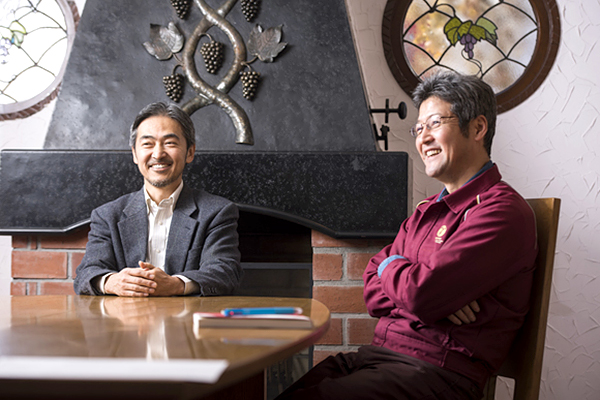
Left:Keiichi Shiina, Vice Chairman, Château Lagrange
Right:Naoki Watanabe, Oenologist, SUNTORY TOMI NO OKA WINERY
Suntory’s two major winemaking centers are the Tomi no Oka Winery and Château Lagrange in Bordeaux.
Shiina and Watanabe spend their days working with the local people, climate and ‘Terroir’, aiming to create wines reflecting the local land.
Continuing on from the last installment, we present a dialogue on viticulture in Japan and France.
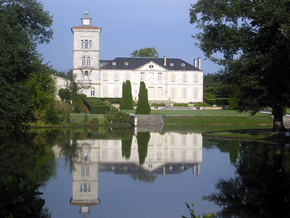 | 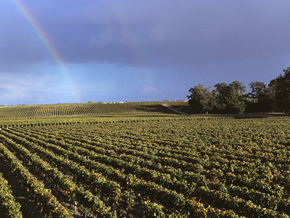 |
| Château Lagrange | Vineyard at Château Lagrange |
The individual styles and methods of Japan and France
Watanabe: In France, when you’re making wine, you start by setting the goal and then work towards it, yes? I think that’s a strong point of French viticulture. The ability to come up with concepts is just amazing.
Shiina: In France, whether it works out or not is mostly down to the ability of the top management, and I don’t mean just in winemaking. It all depends on how much vision they have, how well they lay it all out, and how effectively they transmit that to the people who work with them. What’s really important there is the ability to conceive ideas. For example, at Lagrange we’ve got two wonderful, amazingly capable top managers, a managing director Matthieu BORDES and a technical director Benjamin VIMAL. They get the work done very well and ensure an excellent dynamic.
Watanabe: Over there, you think “What kind of wine do we want to make?” and then follow it up with “So how do we get there?”. What to bring out, to cultivate, by planting what grape in what soil, what to do about the vinification, and so on. So there’s a nice balance between letting things happen and thinking more proactive.
Shiina: That’s right. We’ve got a bit of leeway, a bit of play. We might handle things flexibly with a bit of “que sera sera,” but when something comes up we really work hard on the issue, getting it to come out right in the end.
Watanabe: We’ve brought that ability to conceive ideas to Tomi no Oka, working out ideas and getting into them as a team to develop Koshu and Muscat Bailey A.
Shiina: I think it’s a Japanese strong point to improve things through teamwork.
Watanabe: Yes, maybe that’s an essential Japanese strength. At Tomi no Oka, we work through cooperation between the team deciding on the flavors we are aiming for and the team doing the practical work.
Shiina: Now that’s an interesting approach.
Watanabe: Sometimes we worry that the message isn’t getting through, but when it functions well we create wine with a real heart where everything falls into place. At the base is the typical Japanese characteristic of doing everything with care.
Shiina: Japanese people work with particular care, all right. For instance, Germans will do something exactly as determined and get it done exactly as required, but the idea of the Japanese method is a little different. They’re not just following a blueprint.
Watanabe: That’s right. We don’t always do exactly what we determined; we’re careful and accurate but also flexible. Meticulous. That comes out in every aspect of the flavor. That’s the way I feel about the results of our work. The conceptional thinking of the French and the meticulous work of the Japanese. Both function in favor of our winemaking. I think we’ll see good results from sharing our strong points on both sides.
Shiina: And we can collaborate in this way because we’re both part of Suntory. That’s got to be one of our strong points as well.
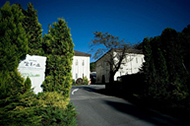 | 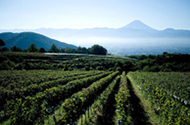 | 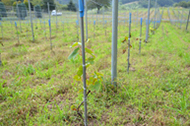 |
| Tomi no Oka Winery | Vineyard at Tomi no Oka Winery | Trellis-grown Koshu |
Seeing in Koshu an answer to the dream of Japanese white wine
Watanabe: For going on ten years now, we at Tomi no Oka have been putting our ideas together step by step. Up until 2009 we focused on reds, using varietals, cultivation methods, and vinification which would make the most of the land, and from 2010 we’ve been working on whites. This is the process that led us to Koshu.
Shiina: You found the next step for Tomi in Koshu, then.
Watanabe: To get the most out of the grapes at harvest in the Tomi no Oka climate, varietals which ripen in October are ideal. Koshu grows naturally in the Yamanashi climate and doesn’t need rain shelters. Having decided it was the ideal varietal for the climate, we’re working on expanding the vineyards.
Shiina: So Koshu is what came out of the idea of viticulture in Yamanashi. It’s certainly one of the interesting options for the ‘Tomi no Oka Winery.
Watanabe: What’s more, right now there is a global trend for healthier products, and we feel it’s a positive element, a sort of bonus, that the sugar and alcohol are both relatively low in this variety.
Shiina: What’s important is how you clarify the message “Why Koshu?”. The Tomi brand, including reds, has a reputation for longer-aged wines, so you need to clarify the position of this different style of wine in your range.
Watanabe: To improve the flavor concentration in the grapes, we are trying various techniques. Koshu is known for its tannins and astringency, tending toward a strong finish. How do we keep it fresh and lively, making it attractive? We’re enjoying the challenge. Koshu is also a unique Yamanashi varietal with originality, so, well, we have a dream. We plan to lay out a clear vision and run with it.
Shiina: There’s plenty of potential if it all falls into place. Run with it, evaluate it, and build on that.
Watanabe: I hope you’ll join me in evaluating the current Koshu at the tasting to follow.
(To be continued in Vol.3)
Related Links
・Conversation With Winemakers Vol.1
・Suntory Japanese Wine
・Château Lagrange Grand Cru Classé Saint-Julien
